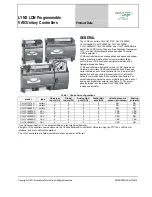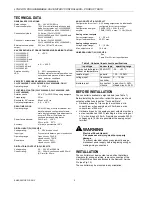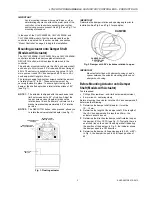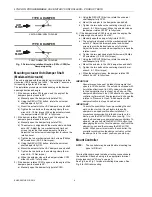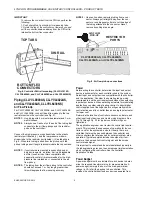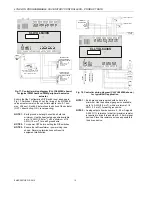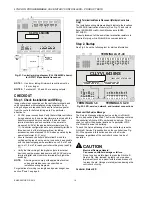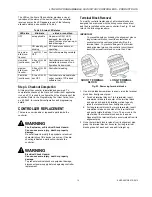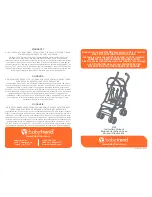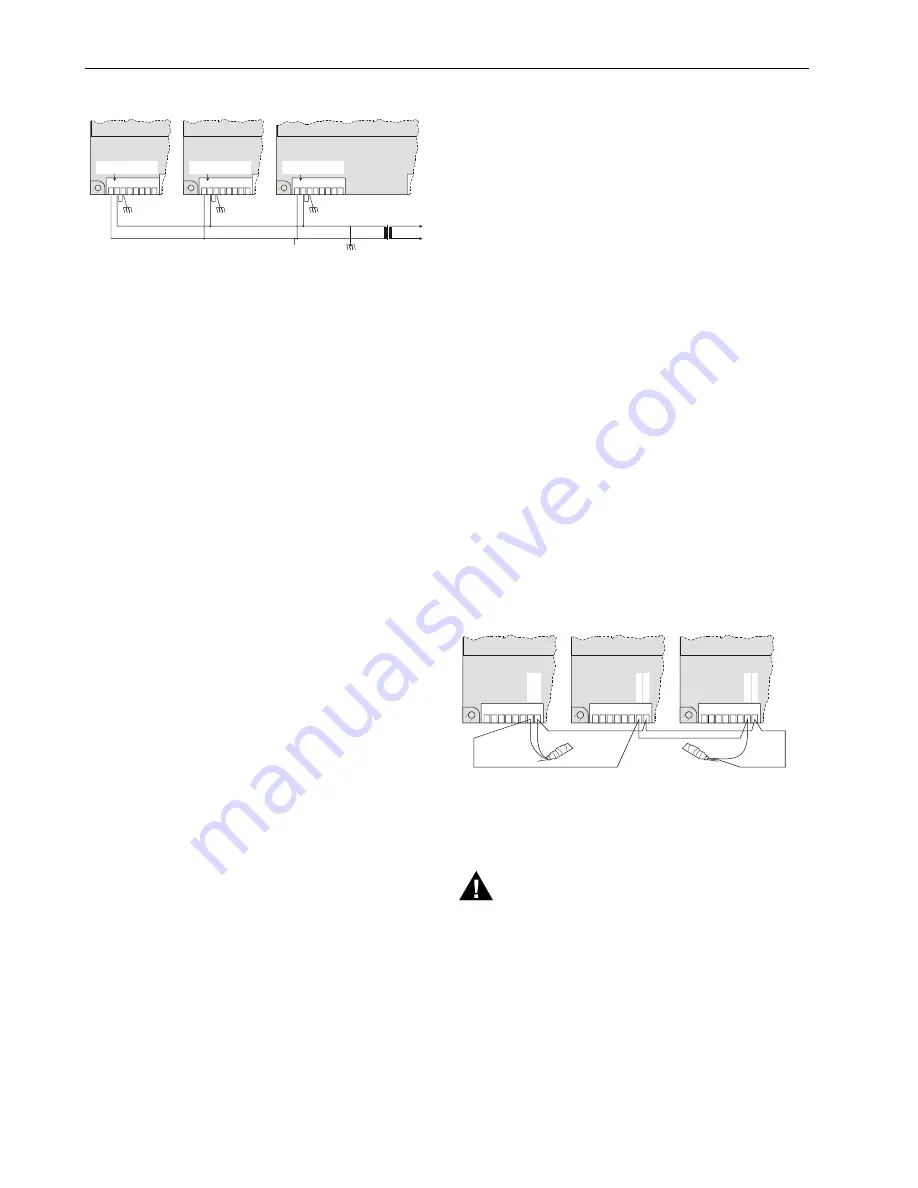
LYNX LON PROGRAMMABLE, VAV/UNITARY CONTROLLERS – PRODUCT DATA
EN0Z-0957GE51 R0615
8
1 2 3 4 5 6 7 8
1 2 3 4 5 6 7 8
1 2 3 4 5 6 7 8
9
9
9
OUTPUT DEVICE POWER
TRANSFORMER
120/240 VAC
COM
24 VAC
EARTH GROUND
(TERMINAL 3)
EARTH GROUND
(TERMINAL 3)
EARTH GROUND
(TERMINAL 3)
EARTH
GROUND
WHEN CONNECTING POWER TO THE LYNX LON
CONTROLLER, CONNECT THE COM LEG OF THE VAC
SECONDARY CIRCUIT TO A KNOWN EARTH GROUND.
CONNECT POWER TO
TERMINALS 1 AND 2.
CONNECT POWER TO
TERMINALS 1 AND 2.
CONNECT POWER TO
TERMINALS 1 AND 2.
Fig. 11. Power wiring details for two or more LYNX
controllers per transformer
Communications
Refer to L
ON
W
ORKS
® Mechanisms (EN0B-0270GE51) for a
complete description of LonWorks® Bus network topology
rules and approved cable types.
Cable types for L
ON
W
ORKS
® Bus communications wiring are
Level IV 22 AWG (0.34 mm2) plenum or non-plenum rated
unshielded, twisted pair, stranded conductor wire.
For non-plenum areas, U.S. part AK3798 (single-pair
stranded) can be used.
In plenum areas, U.S. part AK3797 (single-pair stranded)
or U.S. part AK3799 (two-pair stranded) can be used.
Contact Echelon Corp. Technical Support for the
recommended vendors of Echelon-approved cables.
Communications wiring can be run in a conduit, if needed,
with non-switched 24 VAC or sensor wiring. If a longer
L
ON
W
ORKS
® Bus network is required, a Q7751A,B router
(configured as a repeater) can be added to extend the length
of the L
ON
W
ORKS
® Bus. Each network segment can have a
maximum of one repeater.
Pull the cable to each controller on the L
ON
W
ORKS
® Bus and
connect to the controller's communication terminals 7 and 8
(see also Fig. 12).
NOTE:
Connection for operator access to the L
ON
W
ORKS
®
Bus is provided by plugging the Serial L
ON
T
ALK
®
Adapter (SLTA) connector into the L
ON
W
ORKS
®
Bus Jack (see also Fig. 13).
IMPORTANT
All field wiring must conform to local codes and
ordinances (or as specified on installation drawings).
IMPORTANT
Do not bundle device output wires with sensor, digital
input, or communications L
ON
W
ORKS
® Bus wires.
IMPORTANT
Do not use different wire types or gauges on the same
L
ON
W
ORKS
® Bus segment. The step change in line
impedance characteristics causes unpredictable
reflections on the L
ON
W
ORKS
® Bus.
IMPORTANT
In noisy (high EMI) environments, avoid wire runs
parallel to noisy power cables, motor control centers,
or lines containing lighting dimmer switches. Keep at
lest 76 mm of separation between noisy lines and the
L
ON
W
ORKS
® Bus cable.
IMPORTANT
The theoretical limit for each L
ON
W
ORKS
® Bus
segment is 60 controllers. When a repeater is used
and the bus is either singly or doubly terminated, up to
120 controllers can be configured. Actual installations
may have a lower limit, depending upon the devices
connected.
IMPORTANT
The singly terminated bus must have one 209541B
FTT Termination Module for T tap or Star
configurations.
IMPORTANT
The doubly terminated bus must have two 209541B
FTT Termination Modules, one at each end of the
daisy chain (bus-style) wiring run. NOTE that the
Q7751A,B router (configured as a repeater) has
onboard terminating networks that can be jumper-
selected on each segment.
IMPORTANT
Make sure that neither of the L
ON
W
ORKS
® Bus wires
are grounded.
1 2 3 4 5 6 7 8
1 2 3 4 5 6 7 8
1 2 3 4 5 6 7 8
9
9
9
NOTE: ALL LONWORKS CONNECTIONS ARE
MADE TO NET-1 AND NET-2.
NET
- 1
NET
- 1
NET
- 1
NET -
2
NET -
2
NET -
2
BROWN
BROWN
ORANGE
ORANGE
Fig. 12. Termination modules (L
ON
W
ORKS
® daisy chain
connections)
WARNING
Fire, Explosion, or Electrical Shock Hazard.
Can cause severe injury, death or property
damage.
Do not attempt to modify the physical or electrical
characteristics of this device in any way. If trouble-
shooting indicates a malfunction, replace the
controller.

